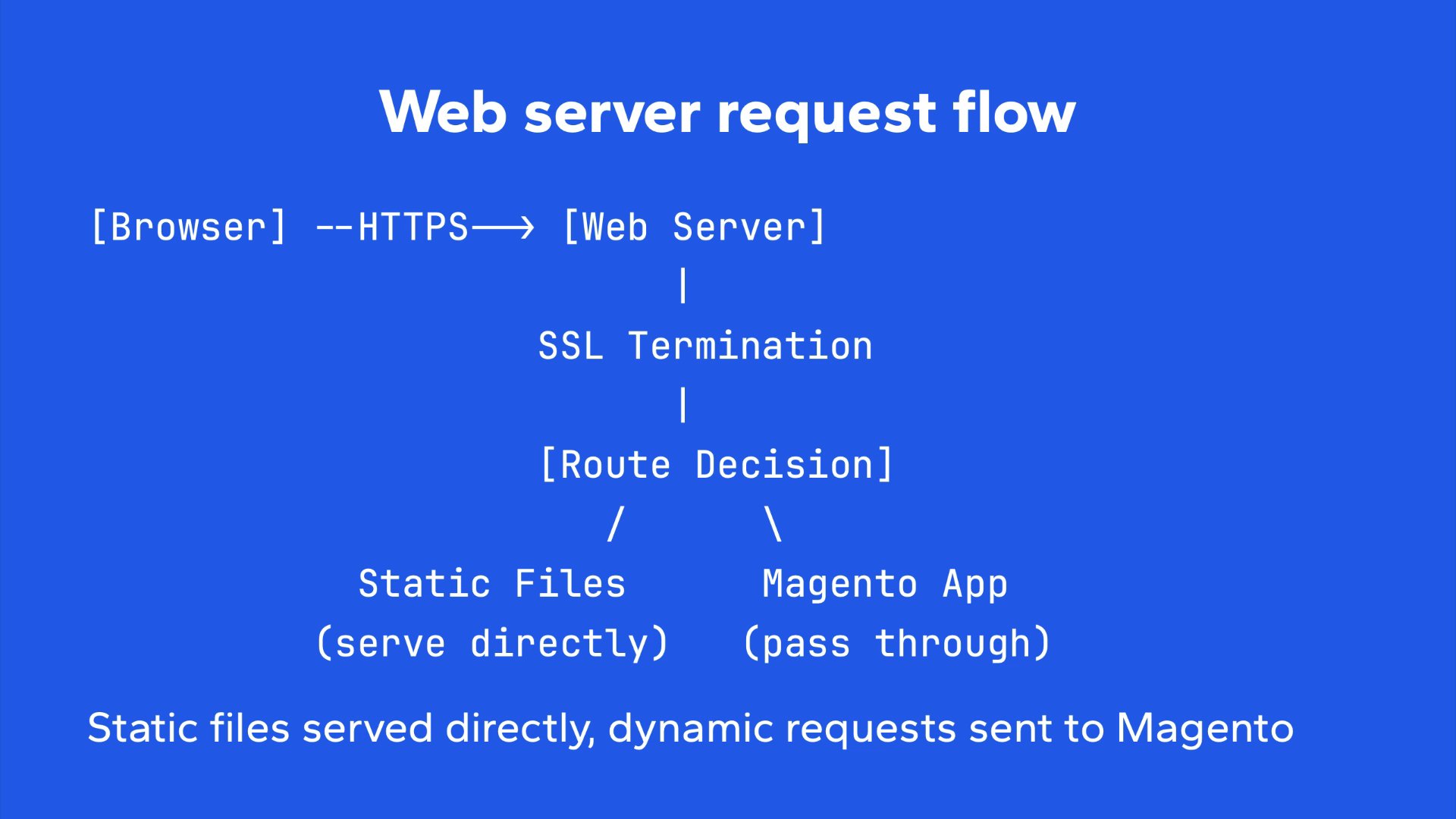Pass a request from a web server to Magento
Learn how web servers like Nginx or Apache securely route HTTPS requests to Magento's pub/index.php entry point.
Lesson Content
When a browser sends a request to your Magento store, several things happen before your PHP code even starts executing. Understanding this entry process helps you debug more effectively by seeing how requests actually flow through your servers.
Web server
The first thing that happens is your request hits a web server - typically Nginx or Apache, though it could also be a load balancer or proxy server. This server receives the HTTP request and determines which application should handle it.
For a Magento store, your web server config contains rules that map your domain to your Magento inst...

Join the discussion!
Comments
Want to comment on this lesson?
Enroll in this course to leave comments.